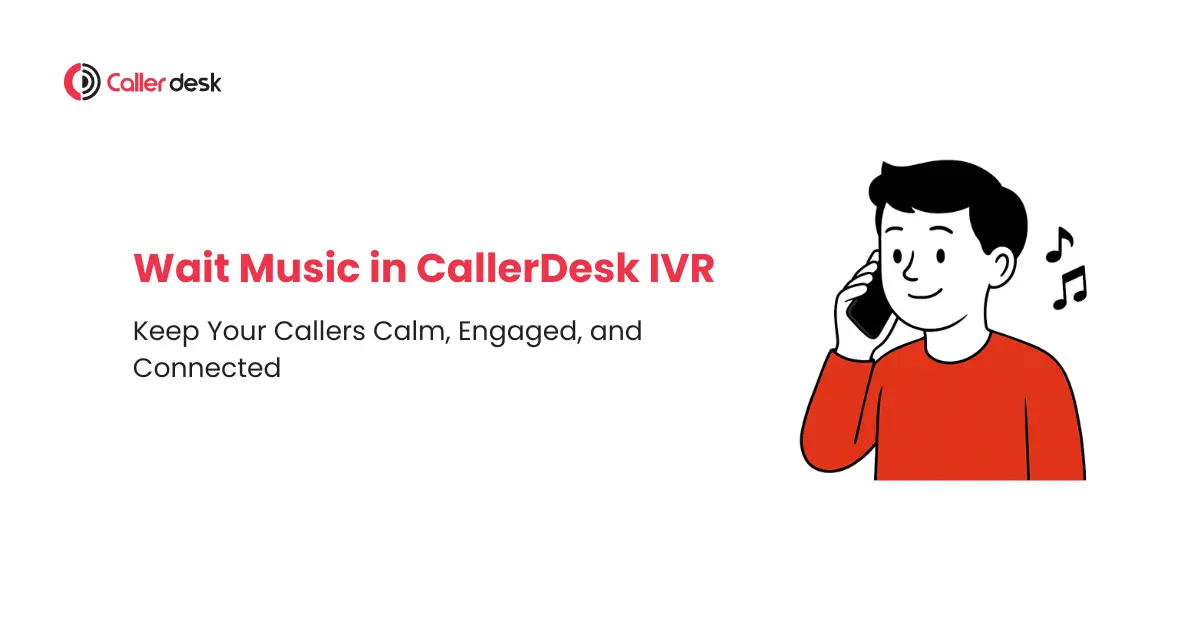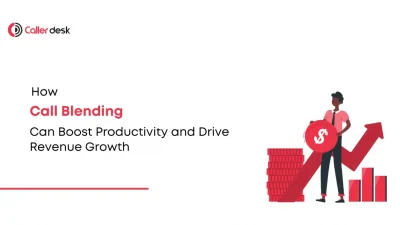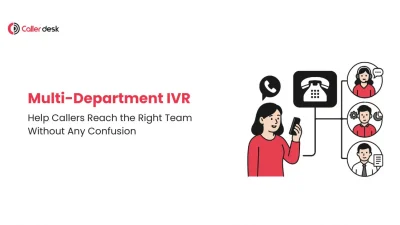Anita runs a travel agency in Mumbai.
Every festive season, her customer support line gets flooded with calls — customers checking flight statuses, hotel bookings, and more.
But there was a silent problem.
When all agents were busy, callers heard nothing — no voice message, no music. Just silence or a plain ringtone. As a result:
- People thought the line was dead
- Some believed the business wasn’t responsive
- Many simply hung up before anyone could answer
Anita didn’t realize it, but she was losing real customers every single day.
Then she made one small change.
She enabled Wait Music feature — a feature that plays soft background music and a short message when callers are on hold.
Now when someone calls and all agents are busy, they hear:
“Thank you for calling Anita Travels. All our agents are currently attending to other customers. Please stay on the line — we’ll connect you shortly.”
And calm, professional music plays in the background.
What changed?
- Call hang-ups dropped by nearly half
- Callers stayed on the line longer
- Her team had more time to wrap up previous calls
- More calls got answered, and more bookings got confirmed
This is all thanks to the wait music feature. But what exactly is wait music?
What Is the Wait Music Feature?
Wait Music is an audio experience for callers waiting in the queue. When all your agents are busy, instead of letting customers hear the usual ringing tone or complete silence, you play:
- A friendly voice message
- Background music (calm, instrumental, or brand-themed)
This reassures the caller that:
- Their call has gone through
- Someone will speak to them shortly
- They’re not being ignored
Example:
“All our agents are currently assisting other customers. Please stay on the line. We’ll connect your call shortly.”
Why Wait Music Is Critical for Customer Experience
Most businesses spend time improving what happens during a call — scripting, training agents, or integrating CRM tools. But what many forget is that the customer experience actually starts before a call is even answered.
That initial waiting time — even if it’s just a few seconds — creates the first impression. And silence or a default ringing tone often makes callers feel ignored or uncertain.
Here’s why Wait Music is a must-have feature in any phone system:
1. Prevents Call Abandonment
When customers hear silence, they assume no one is available or the call isn’t going through. This leads to dropped calls, frustrated customers, and missed opportunities.
Wait Music fills that gap with a friendly message and calming background audio — giving callers a reason to stay on the line and wait patiently.
2. Builds a Professional and Trustworthy Brand Image
A recorded message like:
“Thank you for calling. All our agents are currently assisting other customers. Please stay on the line.”
… immediately makes your business sound structured, attentive, and customer-friendly — even before a person speaks.
This small touch builds trust and confidence in your brand, especially for first-time callers who are forming an opinion about your service.
3. Makes Waiting Time Feel Shorter
Psychologically, silence during a wait feels longer and more frustrating. But music creates a distraction — it gives the caller something to listen to, which makes the waiting time feel shorter and less stressful.
This is called “perceived wait time” — and Wait Music helps reduce it.
4. Reduces Pressure on Support Staff
When callers hear a clear message and pleasant music, they’re more likely to wait patiently. This gives your agents enough time to properly complete ongoing calls, reducing errors and improving the overall quality of support.
Without this buffer, agents often feel rushed or forced to jump between calls — which hurts customer experience in the long run.
5. Improves Call Completion and Conversion Rates
The longer callers stay on the line, the more chances your team has to:
- Answer the call
- Understand the need
- Close a sale or resolve an issue
Wait Music increases the number of calls that are actually answered, which leads to more meaningful conversations — and ultimately, more sales, appointments, or resolved queries.
Use Case: Health Clinic Improves Patient Experience
A busy health clinic added Wait Music to their IVR with this message:
“Thank you for calling ABC Clinic. All team members are currently attending to other patients. Please stay on the line — your call is important to us.”
In just two weeks:
- Call drop rate decreased by 40%
- Patients waited longer without complaint
- Staff managed call queues more calmly
This helped the clinic deliver better service without hiring more people — just by improving the waiting experience.
Best Practices for Using Wait Music Effectively
To get the most value from your Wait Music feature, it’s important to set it up the right way. Here are some key tips to follow, along with why each one matters:
1. Keep the Message Short and Polite
Your wait message should be clear, friendly, and no longer than 8–10 seconds. Long or complex messages can confuse callers or make them impatient.
2. Use Calm and Brand-Friendly Music
Choose music that reflects your business tone — calm, professional, and easy to listen to. Light instrumental or soft ambient tracks usually work best.
3. Avoid Loud, Distracting, or Repetitive Tracks
Looping the same sound repeatedly or playing loud audio can frustrate callers and make the wait feel longer than it is.
4. Update Messages for Seasons or Promotions
Refresh your wait messages during festive seasons, special offers, or important business changes.
5. Test the Entire Call Flow Regularly
Always test your IVR system end-to-end — including how the wait music plays, how it sounds on different networks, and whether the message timing is synced well.
Conclusion
Every second a caller waits is a chance to either build trust — or lose it.
Silence creates doubt. Wait Music creates reassurance.
It’s not about entertaining your callers. It’s about letting them know their call matters, even when they’re on hold.
If you want to reduce call drops, improve customer satisfaction, and sound more professional — Wait Music is one of the easiest features you can implement.
With platforms like CallerDesk, enabling Wait Music is quick, customizable, and designed to match your brand tone — making every call feel more professional from the first ring.



